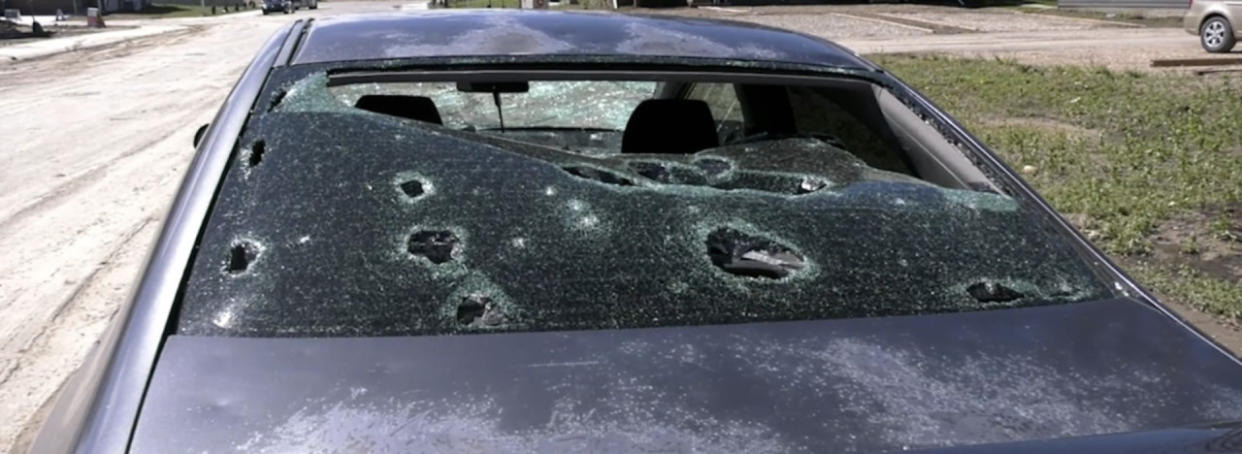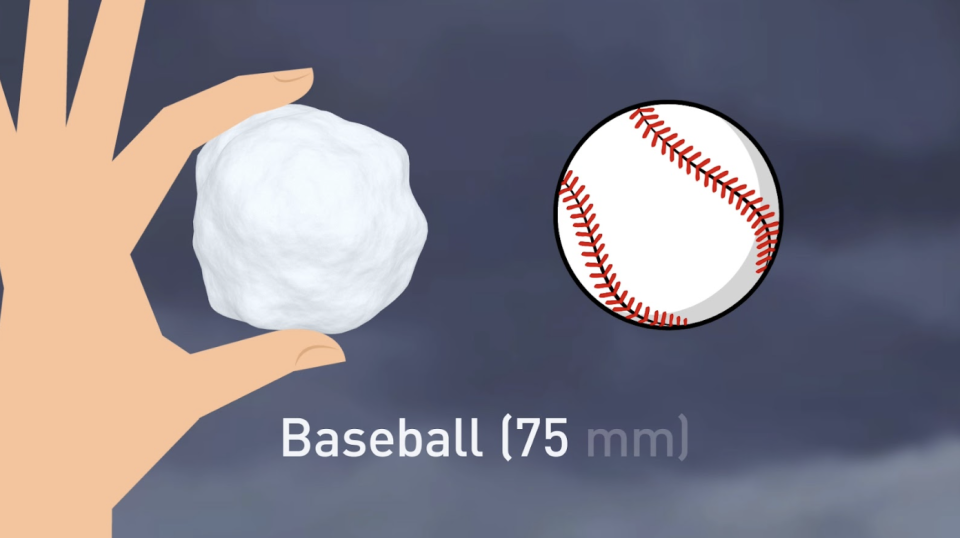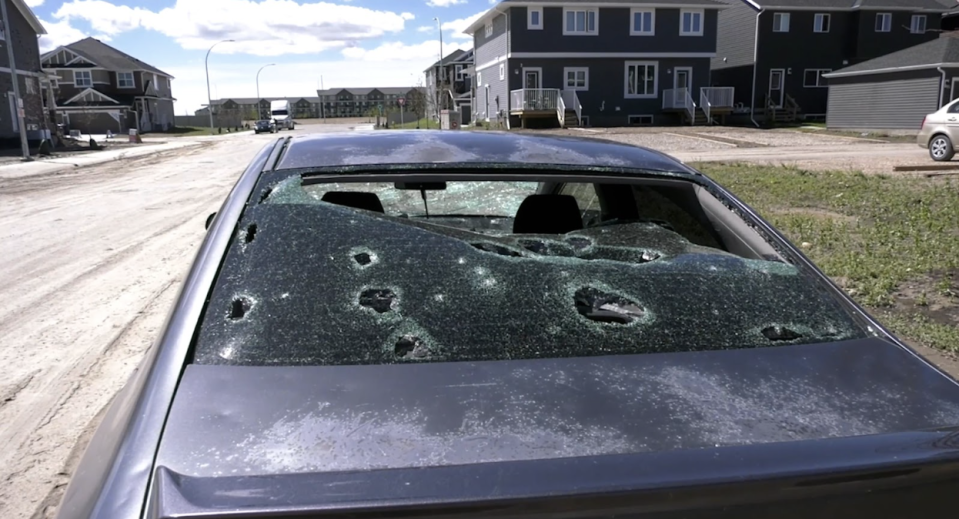Peas, walnuts and golf balls: here’s what hailstone size means for damage

You’ve seen it before: the severe weather alert comes in, and along with warnings about lightning, strong wind and rain comes a description of the size of hail the storm might produce.
But what threat do pea, golf ball, or baseball-sized hailstones pose?
The Northern Hail Project’s Simon Eng says that while hail damage is influenced by variables like wind speed, hailstone hardness, shape and mass, and the qualities of the object being struck, research is beginning to show certain size thresholds associated with certain damage.
"We do have at least some information to make decisions on in terms of what some of those lower thresholds are for when we start to see damage to different impact receivers," Eng explains.
"Pea-sized hail" (under 10 mm)
Risk: crop damage, tree damage, storm drain blockage and flooding
Even relatively small hailstones pose a risk, Eng says, if they fall in large enough volumes.
"There are certain crops that are sensitive enough, especially early on in their development, where large volumes of pea-sized hail are still a problem."
City drainage systems can also be impacted by large volumes of smaller hailstones.
"There’s a class of hailstorm that’s colloquially referred to as a 'snowplow hail event', when a city might actually have to break out equipment to clear the streets," he says. "That can block drainage and can strip foliage off trees, which can further help hail block drainage."
SEE ALSO: How hail – of all shapes and sizes – forms, falls from sky
"Walnut-sized hail" (30-35 mm)
Risk: Vehicle damage
"That’s around the size that you start to see visible dents in vehicles," says Eng.
But while the roof of your car may take a beating from these stones, it will take more to damage the windows.
"You would need some larger hailstones, usually 50 mm in diameter or larger," Eng explains. "That’s when you start to see cracking in windows on vehicles."
"Ping pong/golf ball-sized hail" (40-45 mm)
Risk: Damage to home roofing
"You probably only need about 40-45 mm diameter stuff to start seeing damage to asphalt shingles, in particular aged asphalt shingles," Eng says. "Any kind of roofing exposed to the sun for any period of time, you will start to see impacts that will result in visible damage to those surfaces."
Beyond damage to shingles and other roofing materials, hailstone damage can come in the form of moisture penetration and mould growth.
"Baseball-sized hail" (70 mm diameter)
Risk: catastrophic home and vehicle damage, serious injury, and death
When a hailstone reaches baseball size, or about 70 mm across, windshields can be shattered, and the hail can even become deadly.
"That’s when you start to see big holes or craters put into things like windshields," says Eng.
"That’s where you end up with vehicles being totalled."

Hail-specific emergency alerts, meanwhile, are triggered when baseball-sized hail is expected to fall.
"Baseball-sized hail is at about the lowest threshold where if you have either a vulnerable person or a direct hit on the wrong part of your head, that could potentially lead to a fatality."

A hailstorm that hit northeast Calgary in June 2020 is estimated by the Institute for Catastrophic Loss Reduction to have caused $1.4 billion in insured damages. (Connor O'Donovan/The Weather Network)
Hail is one of nature’s most destructive forces, especially on the Prairies.
The Institute for Catastrophic Loss Reduction (ICLR), which was created by insurance industry stakeholders and promotes disaster prevention research and education, estimates that hail has caused $9.5 billion in insurable damage in Canada since 2008.
The hailstorm that hit northeast Calgary in June 2020, for example, caused an estimated $1.4 billion in damages.
"Hail is kind of a sleeper hazard. Not many people talk about it, I think, because only parts of the country have seen really big storms," says ICLR Managing Director Glenn McGillivry.
"But it causes a lot of damage."
WATCH: See the mighty hailstorm that cost Alberta over $1 billion in damages
RELATED: New ‘disdrometers’ in Calgary will help forecast the next big hailstorm
McGillivry says using metal, rubber slate, or asphalt shingles with an impact resistance rating of Class 4 can be used to minimize the risk of roof damage. Similarly, vinyl siding can be foregone for materials like concrete or cement fibreboard.
He adds that double-pane glass and impact-resistant windows will also hold up better in a hailstorm, and you can also buy films that can hold shattered glass in place. And vehicles, of course, should be moved under cover if possible.
While the upfront cost of these precautions can be high, some reports suggest they could be worth the money, especially if adopted on a wide scale. One report written on behalf of ICLR concluded that impact-resistant shingles reduced the chance of damage by 15 times and that if the roof is damaged, repair costs dropped by half on average. If a home is in an area frequently hit by large hailstorms, like Calgary, the report estimates the benefit-cost ratio of installing impact-resistant shingles can reach 3:1.


